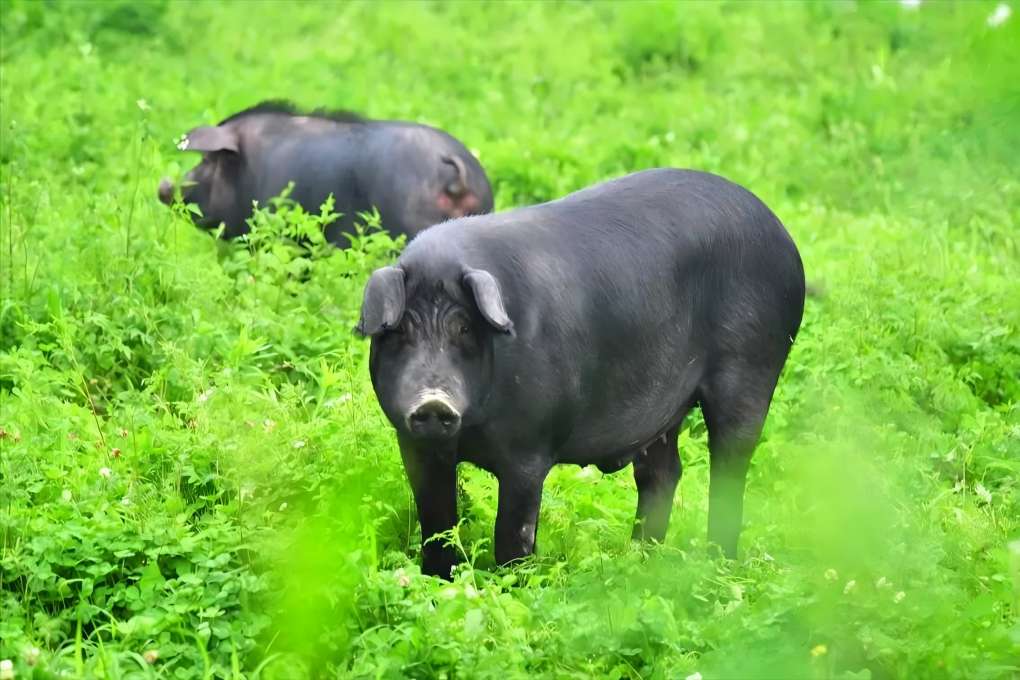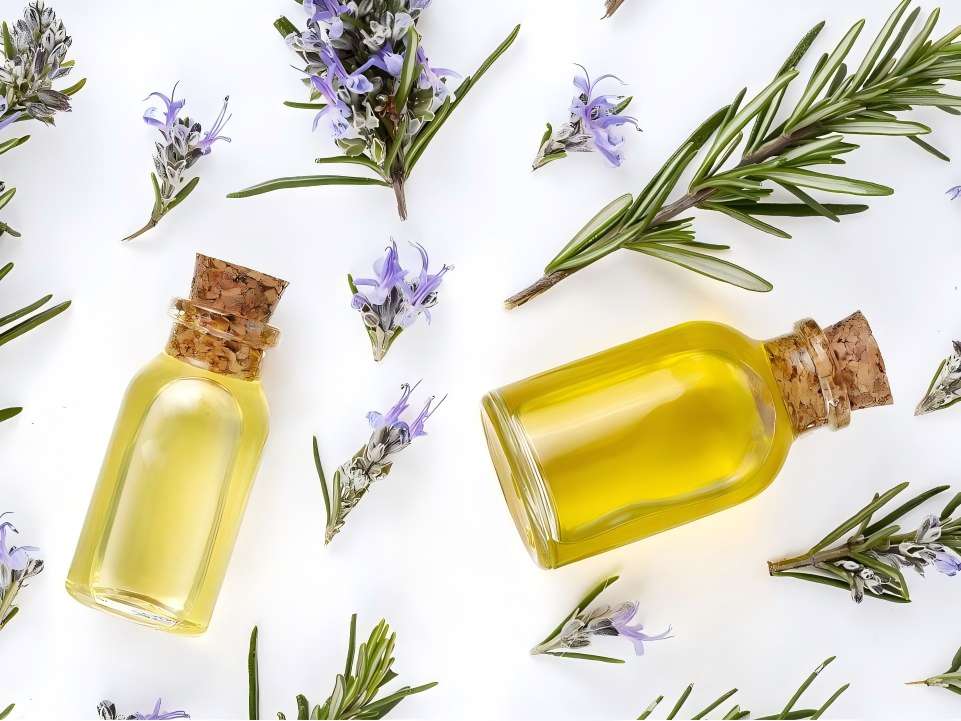What Is the Extraction Method of Rosemary?
Rosemary (Rosmarinus officinalis L.) is a plant of the dicotyledonous phylum, Labiatae, and the genus Rosmarinus, which is a commonly used spice and flavoring, as well as a kind of traditional Chinese medicine. Studies have shown that rosemary has antibacterial, antioxidant, antidepressant, antitumor, anti-inflammatory and other pharmacological effects [1-3].
With rosemary as raw material, it can be made into fat-soluble or water-soluble antioxidants through extraction and refining processes, which are widely used in the fields of food, cosmetics and medicine. With the increasing demand, the extraction and production of natural antioxidants from rosemary has been a hot research topic in recent years. Compared with chemically synthesized antioxidants, the natural antioxidants contained in rosemary extracts are safer, more efficient and more thermally stable [4-5]. The advanced domestic and foreign processes for extracting antioxidants from rosemary are summarized in order to provide a reference basis for industrial production.
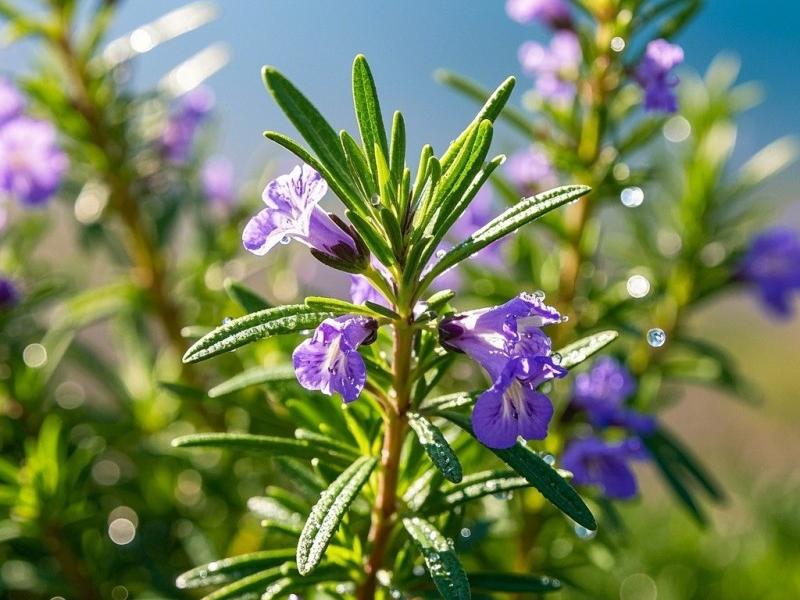
1 Natural antioxidant components in rosemary
Rosemary is rich in a variety of natural antioxidant components[6] , and the components that are usually considered to have developmental and utilization values include carnosic acid, carnosol, rosmarinic acid, rosmanol, etc.[7] . In GB 1886.172- 2016 “National Standard for Food Safety Food Additives Rosemary Extract”[8] , the product extracted from rosemary containing water-soluble antioxidants or fat-soluble antioxidants is referred to as rosemary extract, and the sum of the contents of rhamnosinic acid and rosmarinic acid and rosmanol are used as the quality control index of fat-soluble extracts, and the rosmarinic acid The sum of the contents of silymarinic acid and silybinol was used as the quality control index for the fat-soluble extract, and the content of rosemarinic acid was used as the quality control index for the water-soluble extract.
2 Extraction process
Solvent extraction, supercritical CO2 extraction, ultrasonic-assisted extraction and microwave-assisted extraction are the main methods for extracting antioxidants from rosemary [9-10].
2.1 Solvent extraction
This is a traditional method, which is also commonly used in industrial production, using organic solvents such as ethanol, methanol, acetone, ethyl acetate, etc. to extract the target compounds from rosemary. The advantages of solvent extraction are simple equipment, easy operation, high extraction efficiency and good stability. The disadvantage of this method is that it is easy to cause solvent residue.
The use of green and non-toxic extraction solvents instead of the traditional volatile organic solvents has become a new direction in the research. Shoshana et al [11] used vegetable oils [high oleic soybean oil (HOSO), peanut oil (PO) and cottonseed oil (CO)] as extraction solvents, and Wang Ying et al [12] used tea seed oil as the solvent for the extraction of fat-soluble antioxidants from rosemary.
As new green solvents, low eutectic solvents (DESs) and ionic liquids (ILSs) are non-toxic, environmentally friendly, highly efficient, easy to synthesize, recyclable and degradable, and are ideal solvents for the extraction of natural active substances. Li Lingna et al. [13] used low eutectic solvents (DESs) to extract rosmarinic acid and rhamnolic acid from rosemary, and the best solvents were selected from 37 DESs systems: lactic acid and 1, 4 butanediol (molar ratio of 1:2) using the extraction rate of RA and CA as the indicator. The antioxidant activity of rosemary extracted with DESs was superior to that of organic solvent extracts.
Vieira et al. [14] used natural low eutectic solvents (NADESs), menthol and lauric acid (molar ratio 2:1) to extract rhamnosus acid and rhamnol, and lactic acid and dextrose (molar ratio 5:1) to extract rosmarinic acid, and the stabilization of several active compounds was better in the NADESs.Wang et al. [15] developed a new type of green thermoexchangeable solvent system, which consists of a low-eutectic solvent/ionic liquid, and is composed of a low-eutectic solvent/ionic liquid. Wang et al. [15] developed a new green thermoexchangeable solvent system, which consisted of a mixture of low co-soluble solvent/ionic liquid/water (1︰2︰1, V/V). The system is homogeneous and single-phase at 60 °C, and transforms into a non-homogeneous two-phase system when cooled to 25 °C. The method can be applied at 60 °C. The system can be used in a variety of applications. The method can effectively extract the water-soluble rosemarinic acid and fat-soluble rhamnolic acid at 60 ℃, and the extract can be cooled down to 25 ℃ to realize the separation with high recovery.
2.2 Supercritical CO2 extraction method
This method utilizes the nature of supercritical CO2 to extract the target compounds from plants. CO2 has the advantages of non-toxicity, inertness, low supercritical temperature and pressure, and easy to remove, so the extraction efficiency is high, and the purity of the target compounds is high, but the equipment is complicated and the cost is high.
Andrea et al. [16] used a two-step extraction using supercritical CO2 (pure CO2, 150 or 300 bar, 40 ℃, 60 min), to which 7% ethanol (CO2-7% ethanol, 150 bar, 40 ℃, 120 min) was added to aid in solubilization, and the concentration of rhamnosus acid in the final extract was up to 40% of the total dry weight.Thibault et al. [17] used an on-line supercritical fluid extraction method and a supercritical fluid chromatography system to extract carotenoids with pure CO2 (20 MPa, 25 ℃), and fractions containing rhamnoside with a 3% polar modifier (ethanol to water 1:1, v/v), rosemarinic acid with 10% polar modifier (ethanol to water 1:1, v/v), and chlorophylls with 30% ethanol as a modifier. The fraction containing chlorophyll was obtained by using 10% polar modifier (ethanol to water ratio of 1:1), the fraction containing rosemarinic acid was obtained by using 30% ethanol as modifier, and the four fractions were analyzed by UHPLC-DAD-ESI-QTOF-HRMS.
2.3 Ultrasonic-assisted extraction method
This method utilizes the cavitation effect of ultrasound, which can improve the permeability and diffusion coefficient of the solvent, thus improving the extraction efficiency, but ultrasound may lead to the degradation of the target compounds, which may affect their purity.
Deng Hui et al [18] used ultrasound to assist in the extraction of antioxidants from rosemary, and the best process conditions were optimized by response surface methodology using the yields of fat-soluble antioxidants and water-soluble antioxidants as indicators. Irini et al. [19] extracted phenolic antioxidants from the residue of rosemary after distillation of essential oil by grinding, pre-soaking, and ultrasound-assisted extraction to improve the extraction efficiency. The ultrasound-assisted extraction method can shorten the extraction time and reduce the use of solvents.
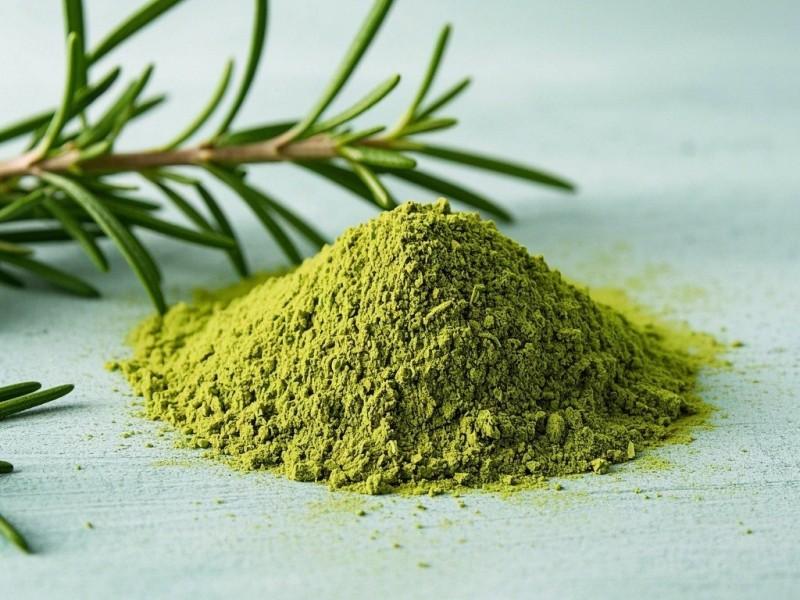
2.4 Microwave-assisted extraction method
This method uses the thermal effect of microwaves to accelerate the solvent dissolution and diffusion of the target compounds, but some solvents can not absorb microwaves, which limits the application of this technology, microwaves may lead to the degradation of the target compounds, affecting their purity. Microwave-assisted extraction is mostly used for the extraction of rosemary essential oil, and is less frequently used in the extraction of antioxidants.
Zhu et al. [20] developed a microwave-assisted extraction method using polyethylene glycol as the extractant to extract rosmarinic acid and rhamnolic acid from rosemary leaves. The results showed that the optimal extraction conditions were 45% PEG-400, 4.3% phosphoric acid, 280 W microwave power, 20 s microwave time, and 1:10 ratio of material to liquid.Hu et al. [21] developed a microwave extraction device for natural antioxidants from rosemary, which can save the operator's time of transporting the materials and improve the efficiency of the process.
2.5 Hydro-enzymatic method
The hydro-enzymatic method is a green method to extract vegetable oils. Based on mechanical crushing, enzymes (protease, amylase, pectinase, vitaminase, etc.) are used to destroy the cell walls of the plant so that the oils can be released. Some researchers have used hydro-enzymatic method to extract bioactive substances from plants, which can shorten the extraction time and has high purity of active ingredients, but the technical requirements are high.
Nguyen et al [22] developed a novel aqueous enzymatic method for the extraction of rosmarinic acid from rosemary leaves, and investigated the ability of several enzymes to extract rosmarinic acid, and demonstrated that cellulase A had the highest extraction efficiency. The optimal extraction conditions were 4.63 h of extraction time, 28.69 mL/g of water, 2.56% of enzyme concentration, and 36.6 ℃, which resulted in a maximum content of 13.97 mg/g of rosmarinic acid. The rosmarinic acid-enriched extracts showed strong DPPH radical scavenging ability, with the IC50 value of 532.01 μg/g. The IC50 value was 532.01 μg/g. The IC50 value was 532.01 μg/mL.
The extracts obtained through the extraction processes described above are crude extracts, and in order to obtain antioxidants with higher purity, it is necessary to remove impurities through purification processes such as macroporous resin adsorption, crystallization, membrane separation and silica gel column chromatography. Rosemary extracts are usually in powder or liquid form, which have poor physical stability and are prone to volatilization. In order to improve the stability and bioavailability, it can be processed by microencapsulation, nanotechnology, composite coating and other techniques [23].
3 Application status and prospect of rosemary extracts
The natural antioxidants extracted from rosemary are most widely used in the food field, and can be added to animal fats and oils, vegetable fats and oils, puffed foods, pre-prepared meat products, sauced and marinated meats, western ham, meat enemas, etc. The effects of the antioxidants are to prevent or delay the development of the food products. The effects of rosemary are to prevent or delay food spoilage, improve food stability and prolong the storage period[24] . Based on its antioxidant properties and various pharmacological effects, rosemary extracts are also used in cosmetic formulations, pharmaceutical products, and animal feed.
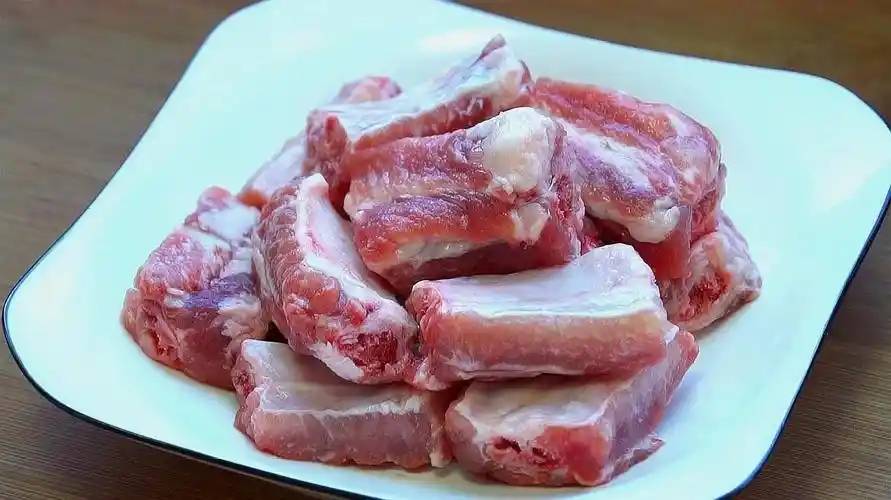
The studies on the bioactive components and pharmacological effects of rosemary extracts are quite sufficient, but the studies on the pharmacological mechanism, immunotoxicity, metabolism and metabolites of the extracts are not sufficiently in-depth. Rosemary extract still has a broad application prospect in the field of medicine. Strengthening the research on its pharmacological mechanism, toxicological effect and pharmacokinetics, developing its medicinal value and perfecting the relevant standards will be conducive to the realization of greater social and economic benefits.
4 Conclusion
The content of target components and antioxidant activity of antioxidants extracted from rosemary by different extraction processes are different to a certain extent, and all extraction processes have their advantages and disadvantages, so it is necessary to choose the appropriate process according to the specific production conditions and needs. With the advancement of science and technology, the use of biotechnology and nanotechnology is expected to further improve the extraction efficiency and purity of antioxidants, and enhance the stability and bioavailability.
Through reviewing the domestic and international literature, the extraction of rosemary antioxidants is mostly a primary separation and extraction or remains in the laboratory preparation stage, with varying yields, and some extraction methods are not suitable for industrial production. The optimization of the extraction process and the search for a suitable route for industrial production to improve the purity, reduce energy consumption and solve the problems of poor stability and volatility are the directions of future research.
References:
[1] WANG Zhenzhao, ZHANG Haiyan, DENG Jinsong, et al. Progress in the study of chemical composition and pharmacological effects of rosemary[J]. Chinese Journal of Experimental Formulas, 2019, 25(24): 211-218.
[2] WU Meng, XU Xiaojun. Recent research progress on chemical composition and pharmacological effects of rosemary [J]. Biomass Chemical Engineering, 2016, 50(3): 51-57.
[3] NIETO G, ROS G, CASTILLO J. Antioxidant and antimicrobial properties of rosemary (Rosmarinus officinalis , L.): A review[J]. Medicines, 2018, 5(3): 98.
[4] S L D, C E M M, NEUZA J. Effect of rosemary (Rosmarinus officinalis) extracts on the oxidative stability and sensory acceptability of soybean oil.[J].Journal of the Science of Food and Agriculture, 2015, 95(10): 2021-2027.
[5] MARíA D M S,JULIáN C S,JUANA M M R. Comparative study of rosemary extracts and several synthetic and natural food antioxidants: Relevance of carnosic acid/carnosol ratio [J]. Food Chemistry, 2020, 309(C): 125688.
[6] XU Yifan, LIU Pu, LIU Peipei, et al. Determination of 11 antioxidant active components in rosemary stems and leaves by HPLC-DAD[J]. Chinese Herbal Medicine, 2018, 49(9): 2153-2157.
[7] ZHOU Huiling, LIANG Wanxian, XU Daoli, et al. Progress of pharmacological effects of active extracts of rosemary[J]. Global Chinese Medicine, 2015, 8(12): 1542-1545.
[8] National Health and Family Planning Commission of the People's Republic of China. National Standard for Food Safety Food Additives Rosemary Extract: GB 1886.172- 2016[S]. 2016.
[9] PIZANI R S, VIGANÓ J, MESQUITA L M S, et al. Beyond aroma: A review on advanced extraction processes from rosemary (Rosmarinus officinalis) and sage (Salvia officinalis) to produce phenolic acids and diterpenes[J]. Trends in Food Science & Technology, 2022(127): 245-262.
[10] ERIC L, THIBAULT L, EMILIE D. Recent developments for the analysis and the extraction of bioactive compounds from Rosmarinus officinalis and medicinal plants of the Lamiaceae family[J]. Trends in Analytical Chemistry, 2021, 135.
[11] GINSBURG R S, MALEKY F. Extraction of lipid-soluble antioxidants from rosemary leaves using vegetable oils[J]. International Journal of Food Science & Technology, 2020, 55(9): 3135-3144.
[12] WANG Ying, ZHU Xinyan, ZENG Xianghui. Optimization of the extraction process and antioxidant activity of fat-soluble antioxidant components from rosemary by response surface methodology[J]. China Food Additives, 2022, 33(11): 148-154.
[13] LI Ling-Na, YANG Ji-Wei, ZHANG Li-Fen, et al. Optimization of low eutectic solvent extraction of rosmarinic acid and rhamnolic acid from rosemary by response surface methodology[J]. Food Industry Technology, 2023, 44(16): 218-227.
[14] CAROLINA V, SíLVIA R, RITA C, et al. Selective extraction and stabilization of bioactive compounds from rosemary leaves using a biphasic NADES[J]. Frontiers in Chemistry, 2022, 10: 954835.
[15] WANG T, GUO T, LI P, et al. Deep-eutectic solvents/ ionic liquids/water mixture as a novel type of green thermo- switchable solvent system for selective extraction and separation of natural products from Rosmarinus officinalis leaves[J]. Food Chemistry, 2022, 390: 133225.
[16] ANDREA P S C, ALBERTO V, GIUSEPPE S, et al. Two-step sequential supercritical fluid extracts from rosemary with enhanced anti-proliferative activity[J]. Journal of Functional Foods, 2014, 11: 293-303.
[17] LEFEBVRE T, DESTANDAU E, LESELLIER E. Sequential extraction of carnosic acid, rosmarinic acid and pigments (carotenoids and chlorophylls) from Rosemary by online supercritical fluid extraction-supercritical fluid chromatography [J].Journal of Chromatography A, 2021(1639): 461709.
[18] Deng Hui, Wang Ying, Zeng Xianghui, et al. Optimization of ultrasound-assisted extraction of antioxidants from rosemary[J]. China Flavorings, 2022, 47(7): 199-204.
[19] IRINI P, ANTIGONI O, DIMITRIOS T, et al. Extraction kinetics of phenolic antioxidants from the hydro distillation residues of rosemary and effect of pretreatment and extraction parameters[J]. Molecules (Basel, Switzerland), 2020, 25(19): 4520
[20] ZHU C Y, FAN Y C, BAI X J. A green and effective polyethylene glycols-based microwave-assisted extraction of carnosic and rosmarinic acids from Rosmarinus officinalis Leaves.[J]. Foods (Basel, Switzerland), 2023, 12(9): 1761.
[21] L. Hu, F.R. Zhao. Rosemary natural antioxidant microwave extraction device, CN217828963U [P]. 2022-11-18.
[22] NGUYEN H C, NGUYEN H N C, HUANG M Y, et al. Optimization of aqueous enzyme-assisted extraction of rosmarinic acid from rosemary (Rosmarinus officinalis L.) leaves and the antioxidant activity of the extract[J]. Journal of Food Processing and Preservation, 2021, 45(3): 15221.
[23] ZHU Zhiyan, TIAN Hao, PAN Jun, et al. Preparation and antioxidant and antibacterial activities of rosemary extract[J]. Preparation and antioxidant and antibacterial activities of rosemary extract[J]. Food Industry Science and Technology, 2023, 44(12): 461-469.
[24] LIU Shengnan, MA Yunfang, DU Guihong. Progress in the application of rosemary and its extracts in food preservation[J]. China Seasoning, 2019, 44(6): 181- 185.


 English
English French
French Spanish
Spanish Russian
Russian Korean
Korean Japanese
Japanese